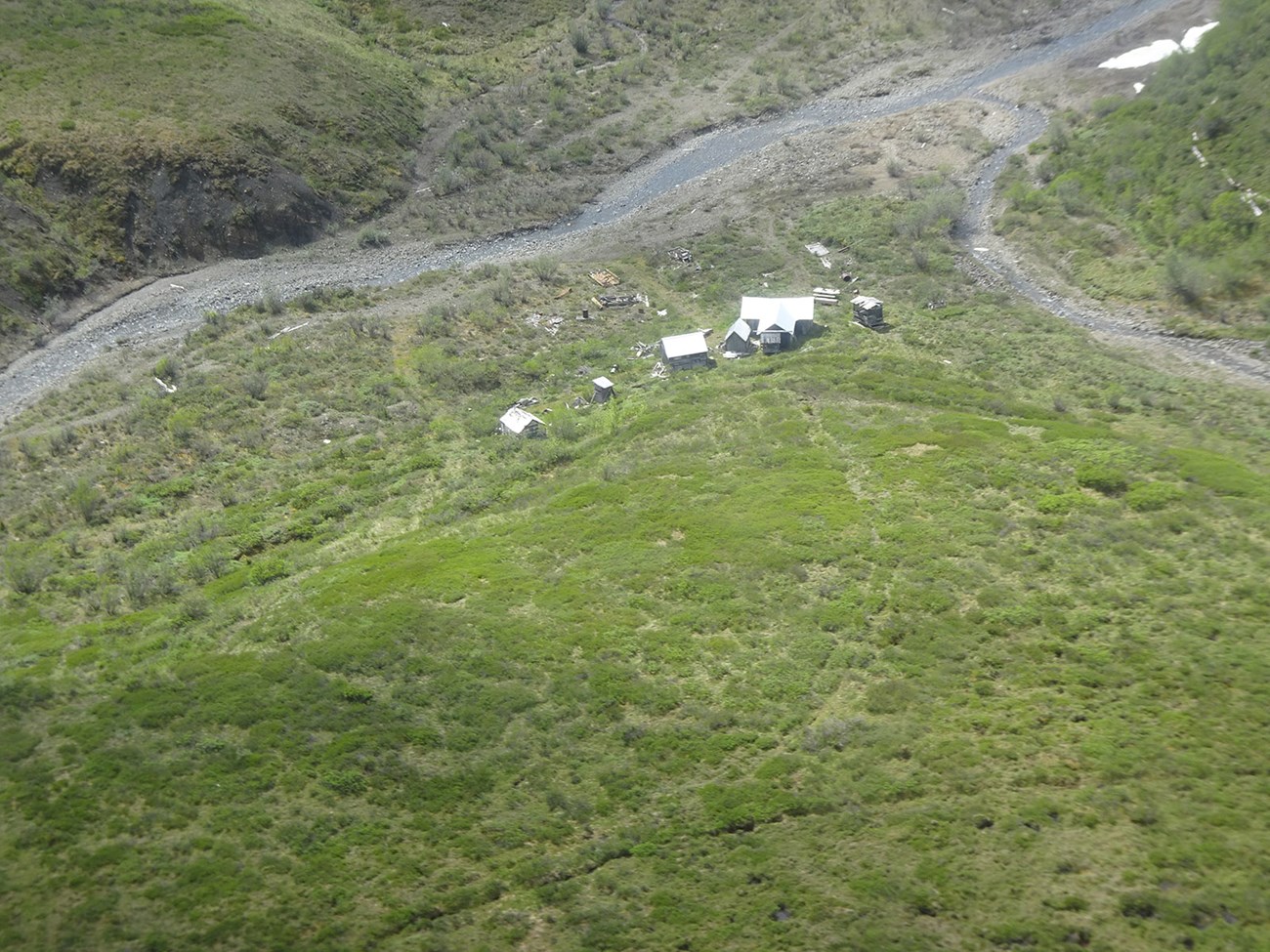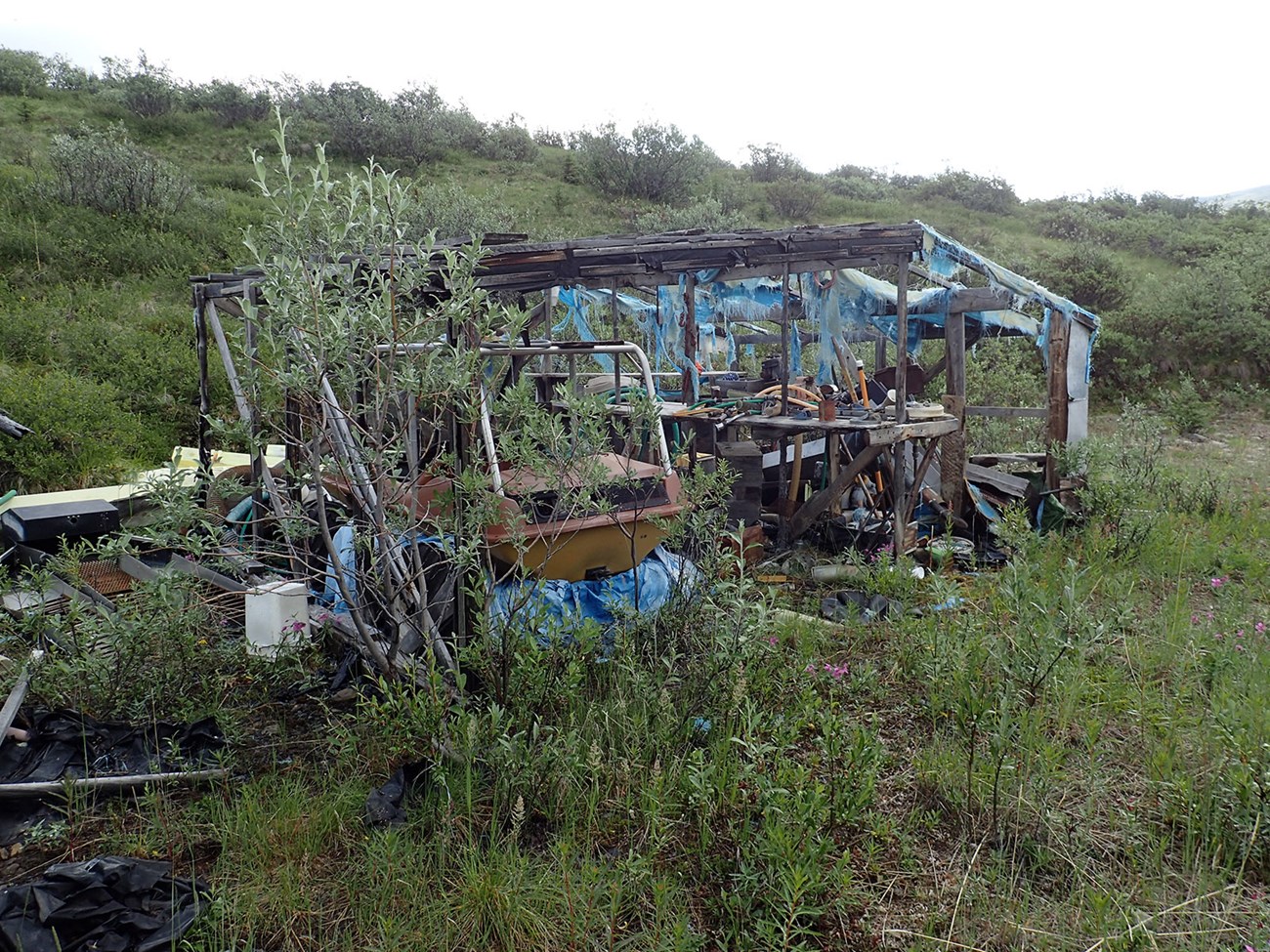Last updated: July 16, 2024
Article
Remediating Abandoned Gold Hill Placer Mines

NPS/MICHAEL LOSO
The National Park Service, with funds from the Bipartisan Infrastructure Law (BIL), will remove six 50-gallon barrels and approximately 15 smaller containers of contaminated materials from abandoned mines within the Yukon-Kuskokwim watershed in Wrangell-St. Elias National Park and Preserve. The project will clean up non-historic and unsightly refuse that poses a potential threat to the environment.
The Gold Hill placer mining district in the northeast corner of Wrangell-St. Elias National Park and Preserve is actively mined by permitted gold miners, but also contains waste abandoned from activities in the 1970s, prior to the creation of the park. The current miners are not responsible for the abandoned materials being cleaned up, in fact, most of the miners are collaborating with the National Park Service to support the cleanup.

NPS/MICHAEL LOSO
Wrangell-St. Elias National Park and Preserve Superintendent Ben Bobowski said: “Removal of these items will mitigate potential leakage of hydrocarbons and other contaminants into clearwater streams. We will continue to highlight remaining culturally significant historic Klondike-era mining artifacts and reduce physical hazards to active miners and visitors.”
“We are deeply appreciative of the collaborative efforts of current miners to assist with this project,” Bobowski said.
The Gold Hill area is approximately five miles from the village of Chisana and 60 miles from the road system. Access to the site is by helicopter only. A field crew assessed the debris in 2021 and separated historic and non-historic materials. Bobowski said, “The barrels were not observed to be leaking. Yet. But they are rusting and could leak at any time. Some of these barrels have been up there for 40 years or more and we could have had minor releases, although we didn’t observe any spill sites during that 2021 survey.”
This project will restore healthy waterways in the immediate Gold Hill region and further protect the downstream community of Chisana, where local residents use water from rivers fed by Gold Hill streams.
